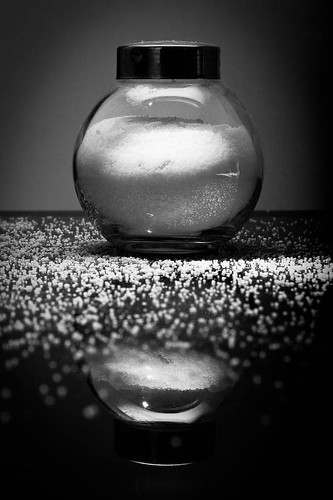
11 Tips for Reducing Your Sodium Intake
Salt. Cheap, plentiful, and pretty much makes everything taste good. Or have we just become accustomed to the flavor of more salt?In a way that we can all relate to - One teaspoon of salt contains 2300 milligrams of sodium. One teaspoon a day... Which is at the high end of the recommended allotment. Seven out of 10 American consume 2.3 times the recommended amount. And the average American doesn't fare much better... consuming 1.5 teaspoons at day. It might not seem like much... but the risk associated with high sodium intake to important to overlook!Recommended Daily Salt or Sodium Intake
1500-2400 milligrams or almost one teaspoon or less
Health Risks Associated with High Sodium Intake Include:
- Stroke
- Heart Disease
- Hypertension
- Abnormal Heart Development
- Osteoporosis
- Kidney Disorders
- Dehydration and Swelling
Tips to Reduce our Salt Intake
- Reduce your intake of processed foods; 75% of the sodium we consume comes from processed foods. So reducing the processed foods we consume is a great start. Buy fresh fruits, vegetables, meats or fish - to avoid salt added during processing. When buying frozen foods - use care as salt may be added.
- When cooking, don't add salt at the beginning - wait until right before you are ready to serve to add the season. Adding it early on the salt will disperse through the layers of the food vs at the end it will be right on the surface where your taste buds will immediately pick up the flavor.
- Watch out out for your Dressings & Condiments! A 1.5 oz serving of Newman's Own Low Fat Italian Dressing contains almost a third of the maximum daily amount we should be consuming at 730 calories! A 2 oz serving of Ranch dressing weighs in at 530 mg.
- When it's an option; buy low- or reduced-sodium, or no-salt-added versions of your favorite foods.
- Rinse canned foods to wash away some of the sodium added to canned food (like beans & canned fish) during processing.
- Keep an eye open for hidden sodium in foods like; baking soda, baking powder, and MSG.
- When cooking use low sodium broths, bouillion or soup.
- Don't add salt to the water when cooking pasta, rice and cereals.
- On food labels look out for sodium in ingredients such as disodium phosphate, sodium alginate, sodium benzoate, and so on.
- When snacking choose nuts & seeds that are unsalted (and raw - for an unrelated reason!). And of course limit salty potato chips & pretzels.
- Use herbs, spices, and salt-free seasoning blends in cooking and at the table.








{ 1 comment… add one }
I am a saltaholic!!! Luckly, knock on wood, all of my levels are good. I use Mrs. Dash when I’m backing and cooking to help keep our sodium levels down. Great post!